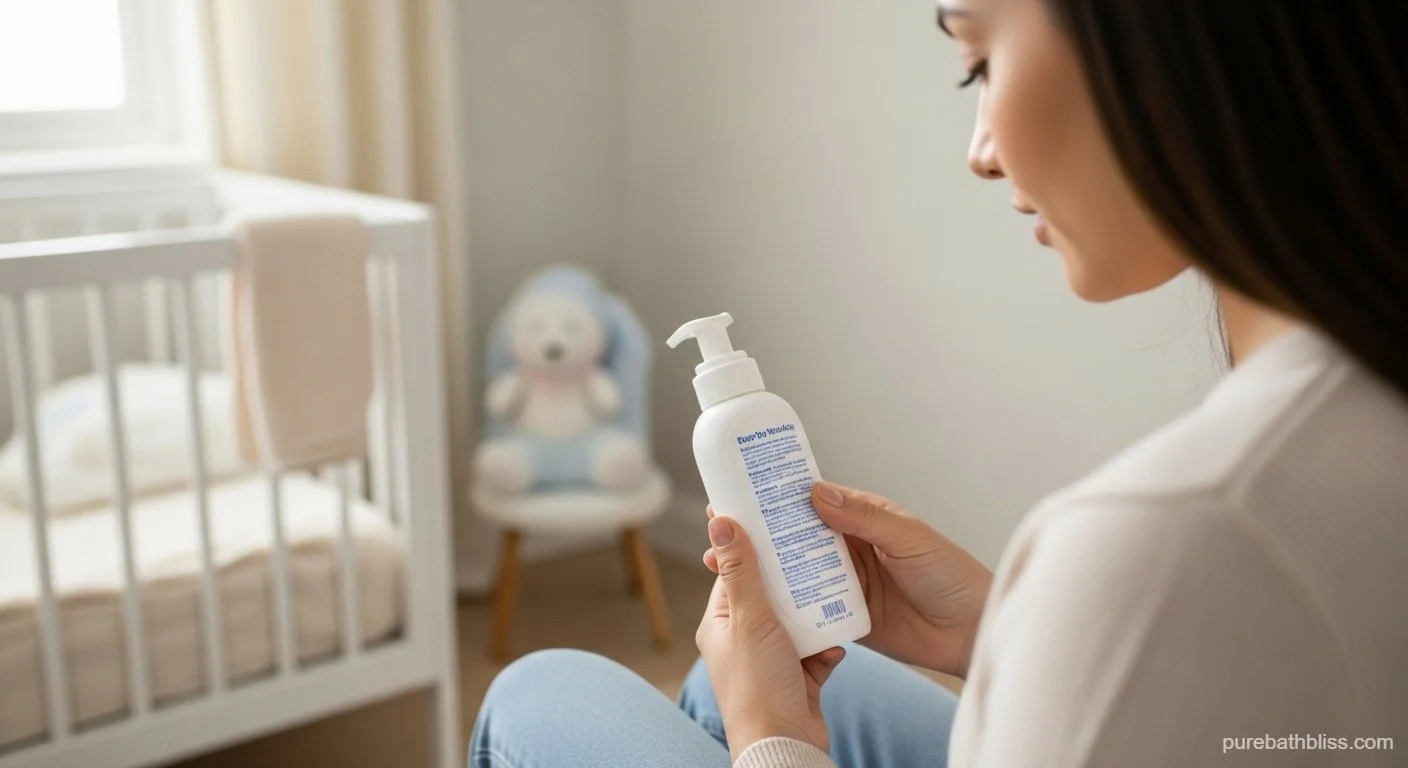The Toxic Five: Ingredients Never to Use on Babies (And Why They’re Still in the Tub)
You walk down the baby aisle. Everything is pastel. Everything smells like “calming lavender.” Everything says “pediatrician recommended” or “tear-free.” And almost everything contains ingredients that have no business touching a baby’s skin.
The truth is uncomfortable: many of the most common infant bath products contain the exact same chemicals banned in the European Union for children under 3. They’re cheap, they work well for manufacturers, and they’re perfectly legal in the United States and Canada.
This investigative guide names the Toxic Five, explains exactly why each one is dangerous for developing bodies, and gives you the tools to spot them instantly.
Understanding these ingredients is the first step in creating the safe environment outlined in our master guide: The Parent’s Guide to a Toxin-Free Tub: Ensuring Safety and Wellness for Your Baby.
Toxin #1: Parabens – The Endocrine Disruptors
The Chemical Role
Parabens (methylparaben, ethylparaben, propylparaben, butylparaben) are inexpensive, broad-spectrum preservatives that keep lotions and washes from growing bacteria for years on the shelf.
The Health Risk
Their molecular structure is so similar to estrogen that they can bind to estrogen receptors and weakly mimic the hormone. In a baby’s rapidly developing endocrine system, even tiny amounts matter.
Found in cord blood and breast milk of mothers using paraben-containing products (Environmental Health Perspectives, 2023)
Banned from leave-on products for children under 3 in Denmark, Sweden, and the entire EU since 2011
Linked to earlier puberty in girls and reduced testosterone in animal studies
Avoidance tip: Any ingredient ending in “-paraben” is off-limits. They hide in shampoos, lotions, wipes, and “baby oil.”
Toxin #2: Sulfates (SLS & SLES) – The Skin Strippers
The Chemical Role
Sodium Lauryl Sulfate (SLS) and Sodium Laureth Sulfate (SLES) are powerful detergents that create rich lather and cut grease. They’re the reason bubble bath foams like crazy.
The Health Risk
They dissolve the natural lipid barrier that keeps baby skin hydrated and protected.
Strip protective oils within seconds → dryness, redness, micro-cracks
Double the risk of moderate-to-severe eczema by age 2 (Pediatric Dermatology, 2023)
SLES can be contaminated with 1,4-dioxane, a probable human carcinogen
Avoidance tip: Reject anything with “sulfate” in the name. Safe alternatives (coco-glucoside, decyl glucoside, lauryl glucoside) clean gently without stripping.
Toxin #3: Formaldehyde Releasers – The Hidden Carcinogen
The Chemical Role
These preservatives slowly release tiny amounts of formaldehyde gas over time to kill microbes in the bottle. They extend shelf life dramatically.
The Health Risk
Formaldehyde is classified by the International Agency for Research on Cancer (IARC) as a known human carcinogen. Chronic low-level exposure in a warm, humid bathroom is especially concerning for infants.
Common names you’ll see:
DMDM Hydantoin
Quaternium-15
Imidazolidinyl Urea
Diazolidinyl Urea
Bronopol (2-bromo-2-nitropropane-1,3-diol)
These trigger the red, itchy “mask” around a baby’s eyes and mouth in sensitive children.
Toxin #4: Phthalates & Synthetic Fragrance – The Allergy Agents
The Chemical Role
Phthalates (DEP, DBP, DEHP) are plasticizers that make fragrance molecules stick to skin and last longer. Companies are not required to list them individually — they hide under the single word “Fragrance” or “Parfum.”
The Health Risk
#1 cause of allergic contact dermatitis in children under 3
Linked to respiratory irritation, wheezing, and asthma-like symptoms in infants
Certain phthalates are banned in children’s toys in the U.S. — yet still allowed in bath products
Avoidance tip: If “Fragrance” or “Parfum” appears anywhere except the very end of the list (and isn’t explained as a single essential oil), walk away. Choose truly unscented products.
Toxin #5: Dyes and Unsafe Colors – The Zero-Function Risk
The Chemical Role
FD&C and D&C colors (Yellow 5, Red 40, Blue 1, etc.) are petroleum-derived dyes added purely for marketing — bright pink shampoo looks “fun.”
The Health Risk
Zero functional benefit
Linked to hives, hyperactivity, and behavioral issues in sensitive children
Some (Red 3, Yellow 5) require warning labels in Europe
Avoidance tip: If it’s neon, put it back. Safe products are clear, white, or naturally tinted (e.g., light beige from calendula).
How to Shop Like a Pro (The 10-Second Label Rule)
Flip the bottle.
Scan for any of the Toxic Five.
If even one appears → put it back.
Look for fewer than 10 total ingredients.
Choose EWG Verified, MADE SAFE, or USDA Organic when possible.
Brands that consistently pass (2024–2025):
Dr. Bronner’s Baby Unscented
Earth Mama
Pipette
California Baby Super Sensitive
Attitude Sensitive Skin
Conclusion
Avoiding the Toxic Five instantly eliminates 90% of the junk marketed to new parents.
You don’t need a chemistry degree — you just need to know these five red flags. Once they’re off your radar, shopping becomes simple, fast, and truly protective.
Now that you can vet the label in seconds, apply this knowledge to your entire routine. Return to the master guide: The Parent’s Guide to a Toxin-Free Tub: Ensuring Safety and Wellness for Your Baby.
With ingredients mastered, let’s tackle the next hidden hazard! Next up → Toxin-Free Toys and Accessories: Mold, Phthalates, and What Actually Belongs in the Tub.


